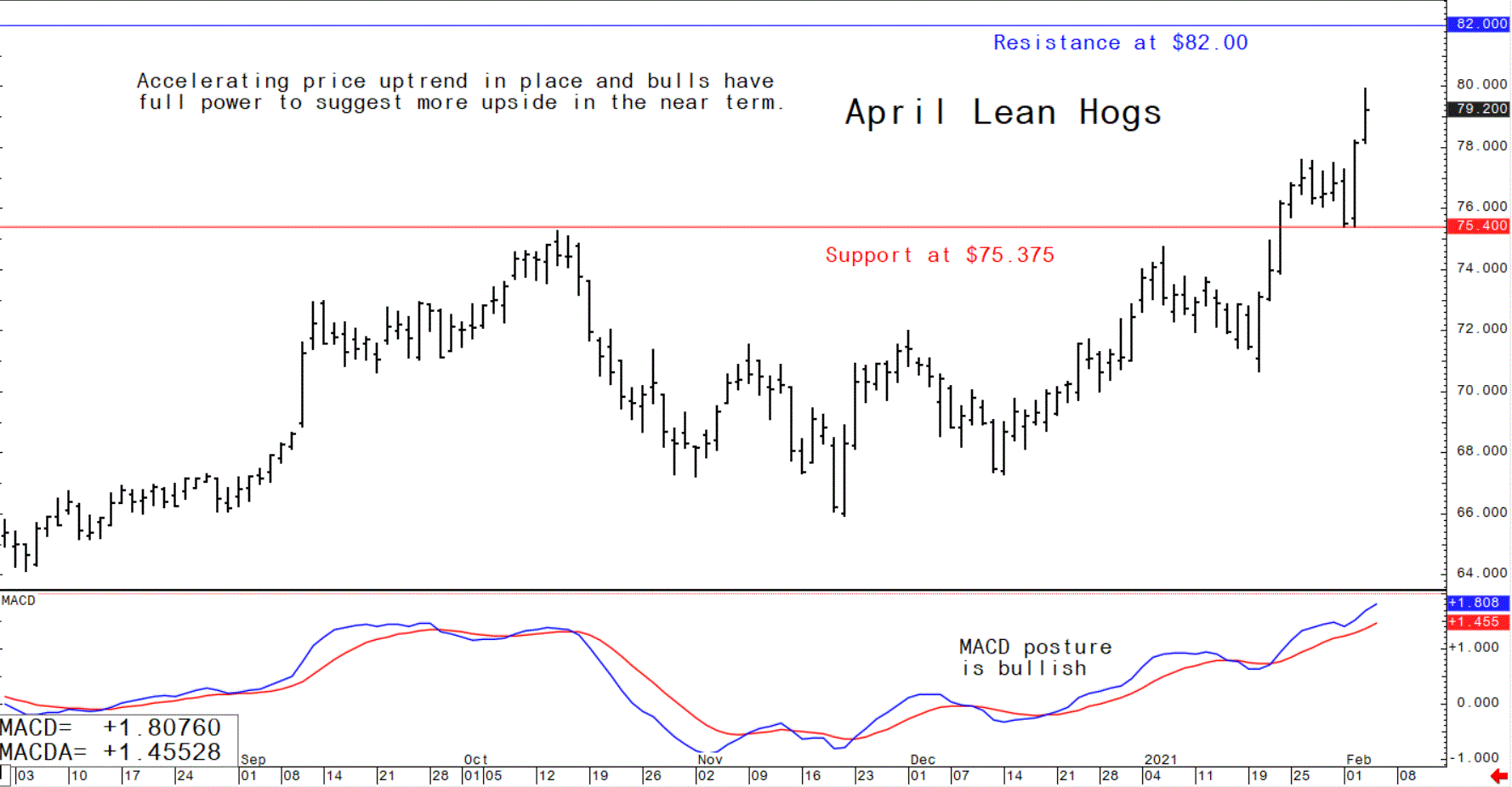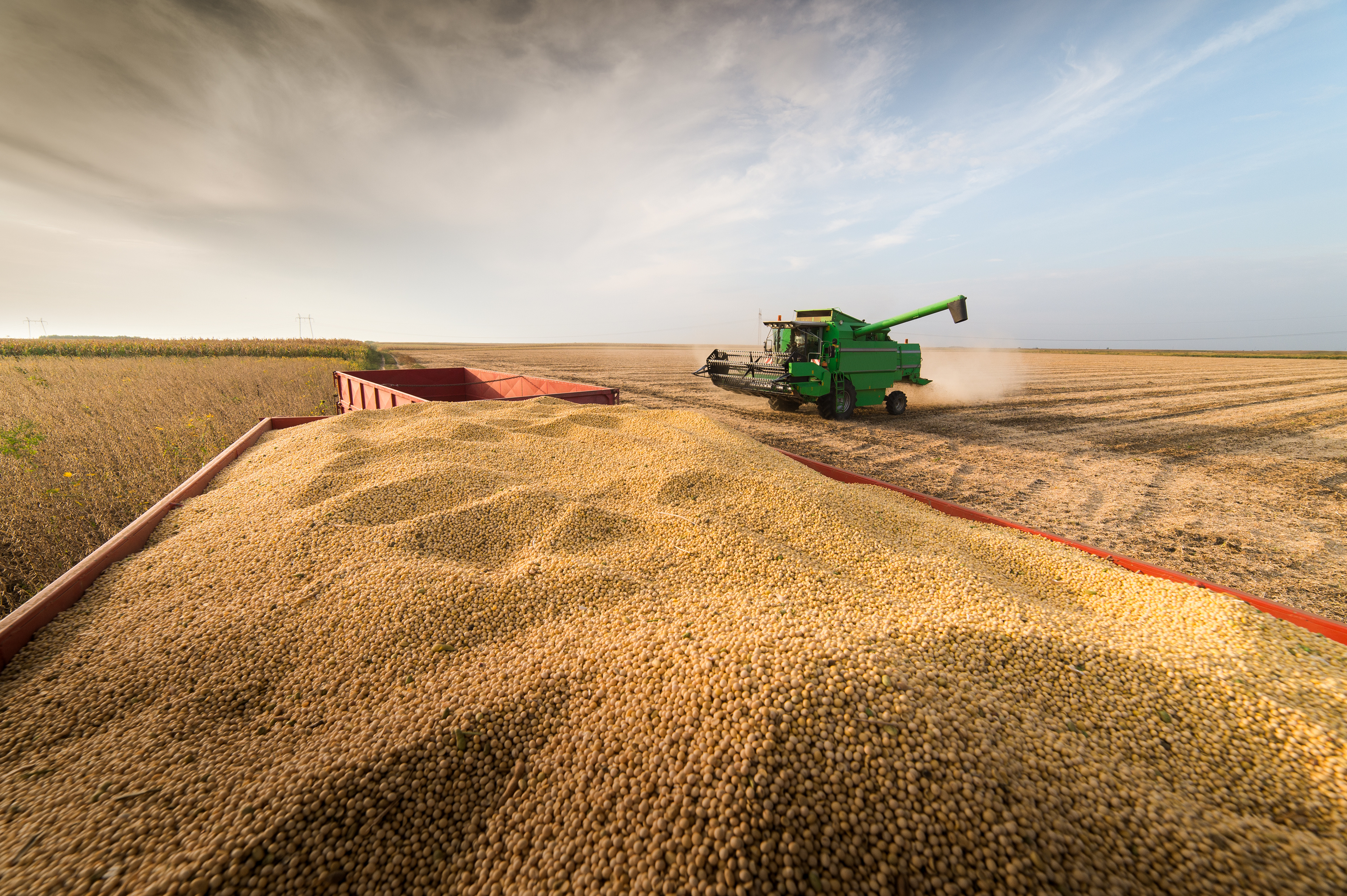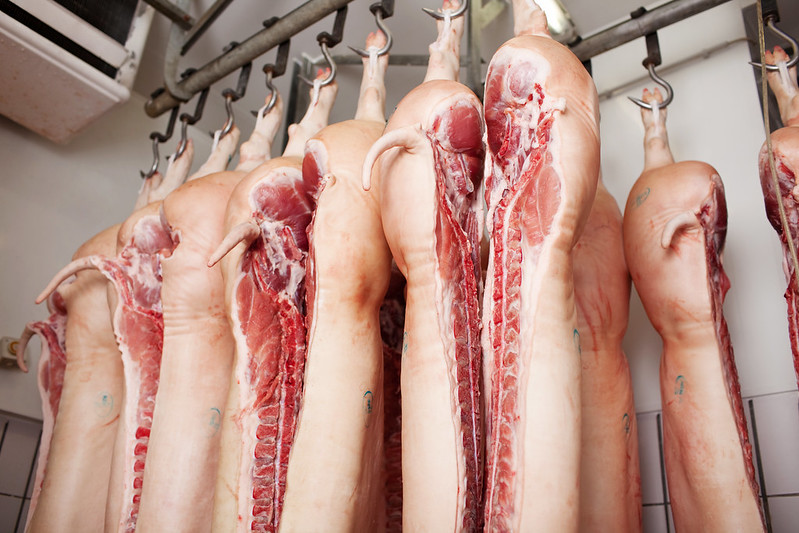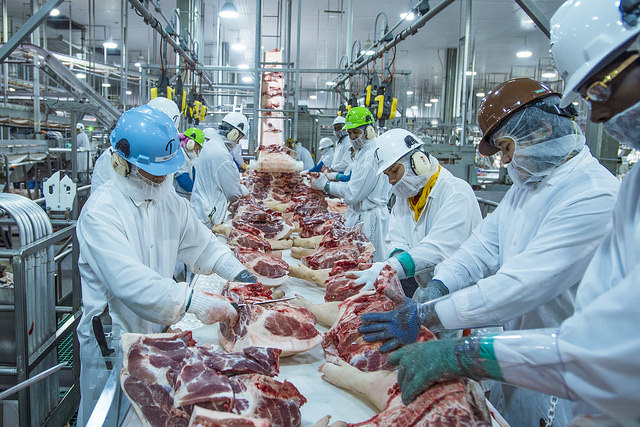



Pig outlook: Lean hog futures prices power still higher
China's recover from African swine fever is questioned and global food prices ratchet up.The pig traders’ perspective
Lean hog futures prices have moved solidly higher this week on reports the Chinese efforts to rebuild its hog herd have been slowed by an uptick in disease. African swine fever is again spreading in northeastern and northern provinces and there has also been a worse than usual rise in Porcine epidemic diarrhoea (PED).
Live hog prices continued a relatively sharp decline in China, now down 11.6 percent in the past month as farmers rush to sell hogs on fears of what may be coming. This could lead to stronger imports later this year. Underlying support for hog futures also stems from reports of increased disease pressure from PEDv and PRRS across both western and eastern US producing regions. That may lead to tighter supplies in from May forward.

Wintry US weather will likely slow hog marketings next week with highs in the low teens and single digits and lows sub-zero covering Nebraska, Iowa, the Dakotas, and Minnesota. There will be bouts of snow and wind at times.
Average hog weights in the Iowa/southern Minnesota market stood at 289.7 lbs the week ending 30 January, a 1.9-lb retreat from the week prior and 2.8 lbs above year-ago levels. There has been speculation of a rise in US sow liquidation and a slowdown in gilt retention.
The next week’s likely high-low price trading ranges
April lean hog futures--$76.00 to $82.00, and with a higher bias
March soybean meal futures--$417.60 to $445.00, and with a sideways bias
March corn futures--$5.36 1/2 to $5.65, and a sideways-higher bias
Global agriculture headlines
World food prices on the rise
Global food prices climbed 4.3 percent from December to January, marking both the eighth consecutive rise and also the highest monthly averages since July 2014, according to the Food and Agriculture Organisation of the United Nations’ (FAO) food price index. “The latest increase reflected strong gains in the sugar, cereals and vegetable oils sub-indices, while meat and dairy values were also up but to a lesser extent,” FAO reported.
FAO raised its 2020 world wheat production estimate by 4.8 million metric tonnes (MMT) to an all-time high of 766.5 MMT, citing strong crops in Australia and Canada. But the organisation also lowered its world coarse grains production estimate by nearly 5 MMT, citing “sizable” cuts to corn production in the US and Ukraine. Looking out to 2021, FAO is calling for “a modest increase in wheat production in the northern hemisphere but a decline in maize production in the southern hemisphere.”

Updates on Asian markets
Disease disrupting Chinese hog herd rebuilding
China was reportedly able to boost its hog herd 31 percent in 2020, as the industry rapidly rebuilt its hog supplies in the wake of African swine fever (ASF), but those efforts are now being slowed by an uptick in disease, according to Reuters sources.
They say ASF is again spreading in northeastern and northern provinces and note there has also been a worse-than-usual rise in Porcine epidemic diarrhea (PED). Indeed, China, who had largely fallen silent regarding new cases of ASF, reported a new case of ASF in January.
Pan Chenjun, senior analyst at Rabobank in Beijing, said ASF “never stopped but recently there's been even more, and more other disease," referring to outbreaks of foot-and-mouth disease and PED. That has lifted pork prices ahead of China’s prime consumption period and kept the country as an aggressive importer of pork. Rising piglet prices signal there’s a shortage, and some producers are slaughtering half finished pigs early due to disease pressures. Shandong-based Yongyi Consulting noted 17 percent of pigs slaughtered last week were under 90 kg (198 lbs) vs the usual weight range of 120kg to 140 kilograms.
China announces another 60,000 MT in frozen pork auctions
China announced it will sell 30,000 metric tonnes (MT) of frozen pork from its state reserves on 4 February and another 30,000 MT on 9 February. That would push its total 2021 reserve sales to 170,000 MT. The country has increased its auctions ahead of the Lunar New Year holiday that begins next week.

China still has appetite for US pork
USDA Thursday reported net US pork sales of 46,300 MT reported for 2021. Increases were primarily for China (17,900 MT, including decreases of 1,300 MT), Mexico (10,300 MT, including decreases of 500 MT), Japan (4,000 MT, including decreases of 100 MT), Canada (2,900 MT, including decreases of 400 MT), and the Philippines (2,600 MT, including decreases of 200 MT), were offset by reductions primarily for El Salvador (100 MT). Exports of 38,300 MT were primarily to China (12,000 MT), Mexico (10,800 MT), Japan (4,600 MT), South Korea (2,700 MT), and Canada (1,800 MT).
The Philippines cap pork and chicken prices around the capital
Philippine President Rodrigo Duterte today signed an executive order mandating price ceilings for pork and chicken in the capital region. Pork prices at markets in Metro Manila must now be sold at 270 pesos to 300 pesos ($5.62-$6.24) per kilogram, from more than 400 pesos in some outlets since December. Dressed chicken prices will now be capped at 160 pesos per kg, which compares to prices as high as 200 pesos per kg before the order.
The caps come after a 50 percent surge in pork retail prices in January versus the year prior as African swine fever slashed supplies. Limited supplies of pork have also kept chicken prices high, despite an oversupply of domestic poultry. These trends were amplified during the Christmas season, with annual meat inflation jumping 10 percent and overall inflation shooting to a two-year high of 3.5 percent.
The view from the United States
US government begins investigation into COVID-19 outbreaks in US meat processing plants
The US House Select Subcommittee on the Coronavirus Crisis on Monday sent letters to the Occupational Safety and Health Administration (OSHA) and to three large processors, JBS USA, Tyson Foods and Smithfield Foods, demanding records related to the outbreaks. “It is imperative that the previous administration’s shortcomings are swiftly identified and rectified to save lives in the months before coronavirus vaccinations are available for all Americans,” according to the letter to OSHA, adding that OSHA could have imposed enforceable safety rules for companies but instead issued non-binding guidance "that companies are free to ignore."

Meatpackers "have refused to take basic precautions to protect their workers, many of whom earn extremely low wages and lack adequate paid leave and have shown a callous disregard for workers' health," Representative James Clyburn chair of the House Select Committee on the Coronavirus Crisis, wrote to JBS, Smithfield Foods and Tyson. "These actions appear to have resulted in thousands of meatpacking workers getting infected with the virus and hundreds dying," Clyburn stated. "Outbreaks at meatpacking plants have also spread to surrounding communities, killing many more Americans." According to Clyburn, OSHA waited months after receiving complaints about meatpacking plants to inspect those facilities, and the fines it did impose address "only a tiny fraction" of virus-cased deaths in meatpacking plants, he wrote in a letter to OSHA's head.
A Tyson spokesperson said the company has invested "more than half a billion dollars during the pandemic to transform our US facilities with protective measures" such as temperature scanning, workstation dividers and social distancing monitors along with additional pay and benefits for employees. "In addition, we’ve added a Chief Medical Officer to help us safeguard and improve the health of our workforce," a statement from the spokesperson noted. "We’re also using random testing as a tool to find the virus, testing thousands of workers a week, both symptomatic and asymptomatic. This strategy has enabled us to move from defence to offense in our efforts to fight the virus."
JBS responded in a statement that it spent "$200 million in health and safety interventions, more than $160 million in bonuses and permanent increased pay, and donated more than $50 million to support our local communities
Smithfield issued a lengthy statement saying, in part: "As a company we have now invested more than $700 million in critical measures to protect employees, including on-site COVID-19 pre-screening and testing facilities; air purification systems; extensive physical barriers at work stations; employee protective equipment, such as shields and masks; significant facility modifications and expansion to ensure distancing in key areas, such as break and lunch rooms; thousands of sanitation stations and prominent banners and signage that outline and encourage safe practices in multiple languages; and the addition of new employees whose sole job is to ensure distancing and sanitation practices are implemented correctly.
Read Jim Wyckoff's updates on the beef and dairy industries on The Cattle Site and see his analysis of the poultry industry on The Poultry Site.







